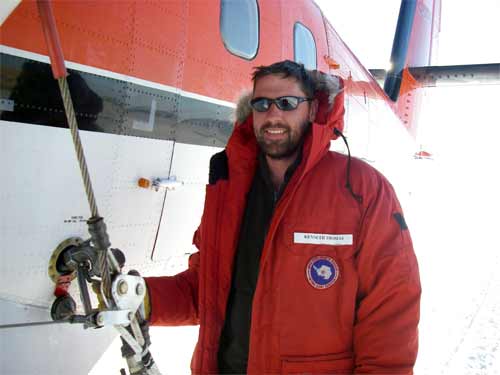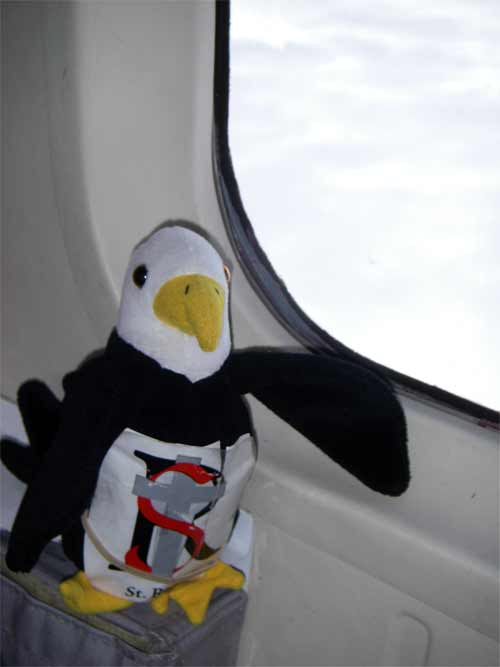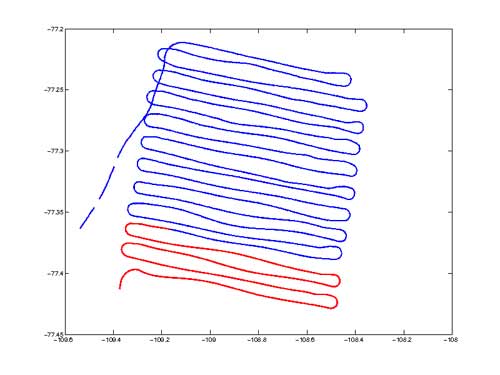Hello Trekkers,You've helped set up all the radars and you have loaded them into the plane and tested them. You're ready to fly in the twin otter airplane over areas of West Antarctica Ice Sheet using flight plans, BUT there is more to it than just getting on the plane.
Let me introduce you to your pilot and co-pilot



Here in Antarctica there are some very specific rules that are followed to ensure safe flying.
A pilot can work 14 hours per day with 10 of these hours flying. Then they need 10 hours off work.
Weather is, once again, one of the most important factors in determining a mission plan. There must be a 1000 foot ceiling. This means any clouds must be 1000 feet above the ground.
Visibility must be 4800 meters. You have to be able to see that far into the distance.
There are also limitations placed on the Twin OtterA highly maneuverable utility aircraft developed by de Havilland Canada. It can be flown slowly and in tight circles, and is designed for 20 passengers, short takeoffs and landings, and often used for cargo, passengers, and as a science platform. airplane.
The Twin OtterA highly maneuverable utility aircraft developed by de Havilland Canada. It can be flown slowly and in tight circles, and is designed for 20 passengers, short takeoffs and landings, and often used for cargo, passengers, and as a science platform. can take 2300 pounds of fuel on our science missions, although it can actually hold more.
2300 lbs of fuel allows for 4 hours of flying with ½ hour reserve.
Our CReSIS Twin OtterA highly maneuverable utility aircraft developed by de Havilland Canada. It can be flown slowly and in tight circles, and is designed for 20 passengers, short takeoffs and landings, and often used for cargo, passengers, and as a science platform. flies at a speed of 125 knots/ hour when collecting data.
With 2300 pounds gallons of fuel the plane can travel 500 nautical miles at 120 knots/hour
Every 200 pounds added to the plane reduces the travel time by 20 minutes.
The plane carries all the equipment, two pilots, and two members of the CReSIS team.
So now that you have these parameters here is a flight plan for you to study.

This is a sample of a flight plan. Now flying is not as simple as it looks. There are many factors that have to be incorporated into the planning of a successful mission.
Calculate how far it is to fly this grid. (Hint: Every minute of latitude or longitude is a nautical mile, but a minute of latitude or longitude is not a minute of time.)
Knowing the flight plan is (Insert your answer from #1 here) nautical miles, how long will it take you to fly this grid?
Will the team have to refuel? (Refer to the information about the plane.) If so how often?
Calculate how long it will take to fly the entire grid.
a. Take your answer from #2 b. Be sure to add 30 minutes for each fuel stop. c. Also add 45 minutes to get from Byrd Surface Camp to WAIS Divide Camp where they refuel before flying the grid.
MOST IMPORTANT: Will Pilot Lexi and Co-pilot Lee have enough on duty time to fly this grid if they began their duty day at 7 o'clock in the morning??
Trekkers, hopefully you have done all the planning correctly and we'll be ready to fly tomorrow, weather permitting. Check back tomorrow. You will not want to miss flying day!
Mr. W


Comments